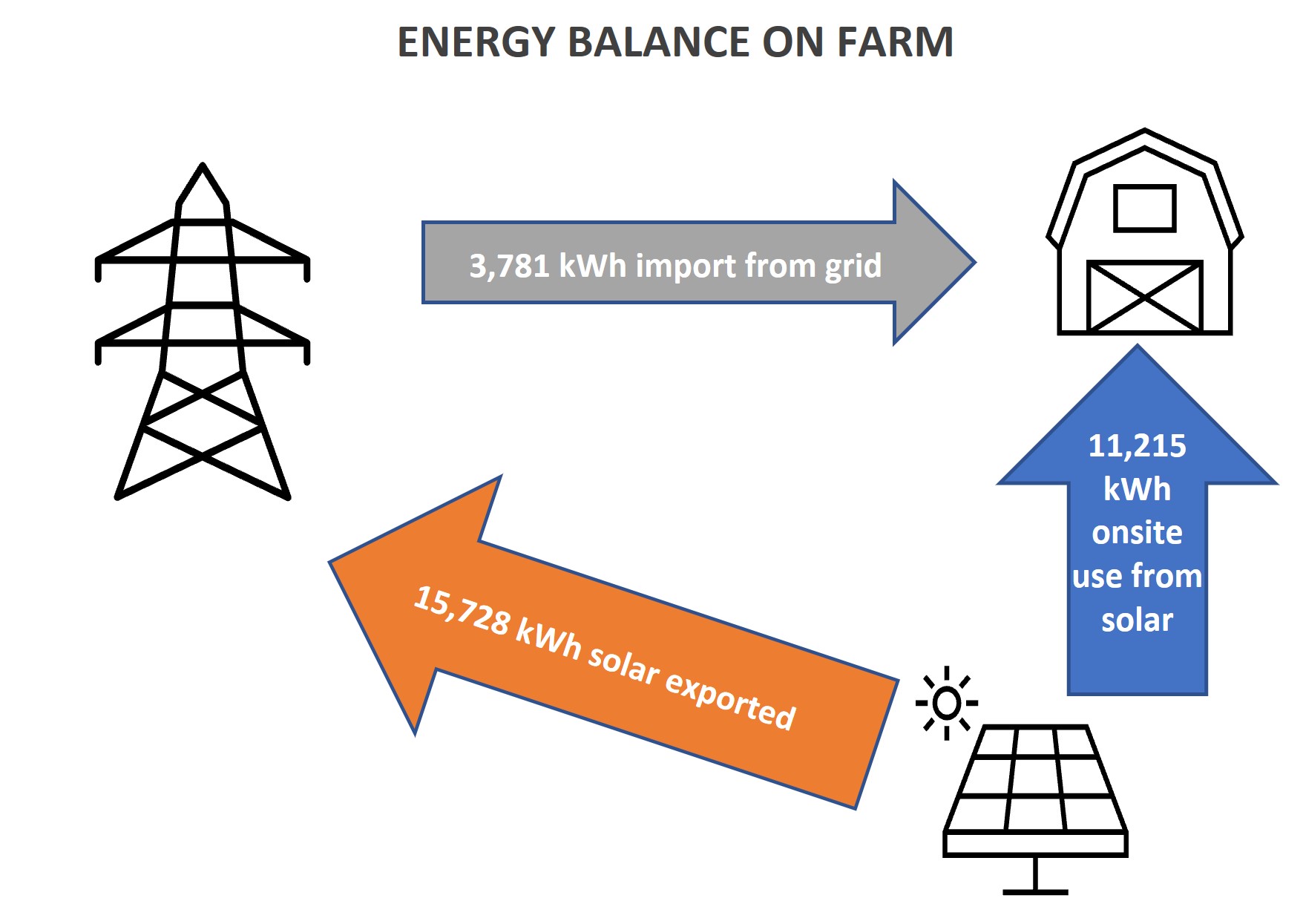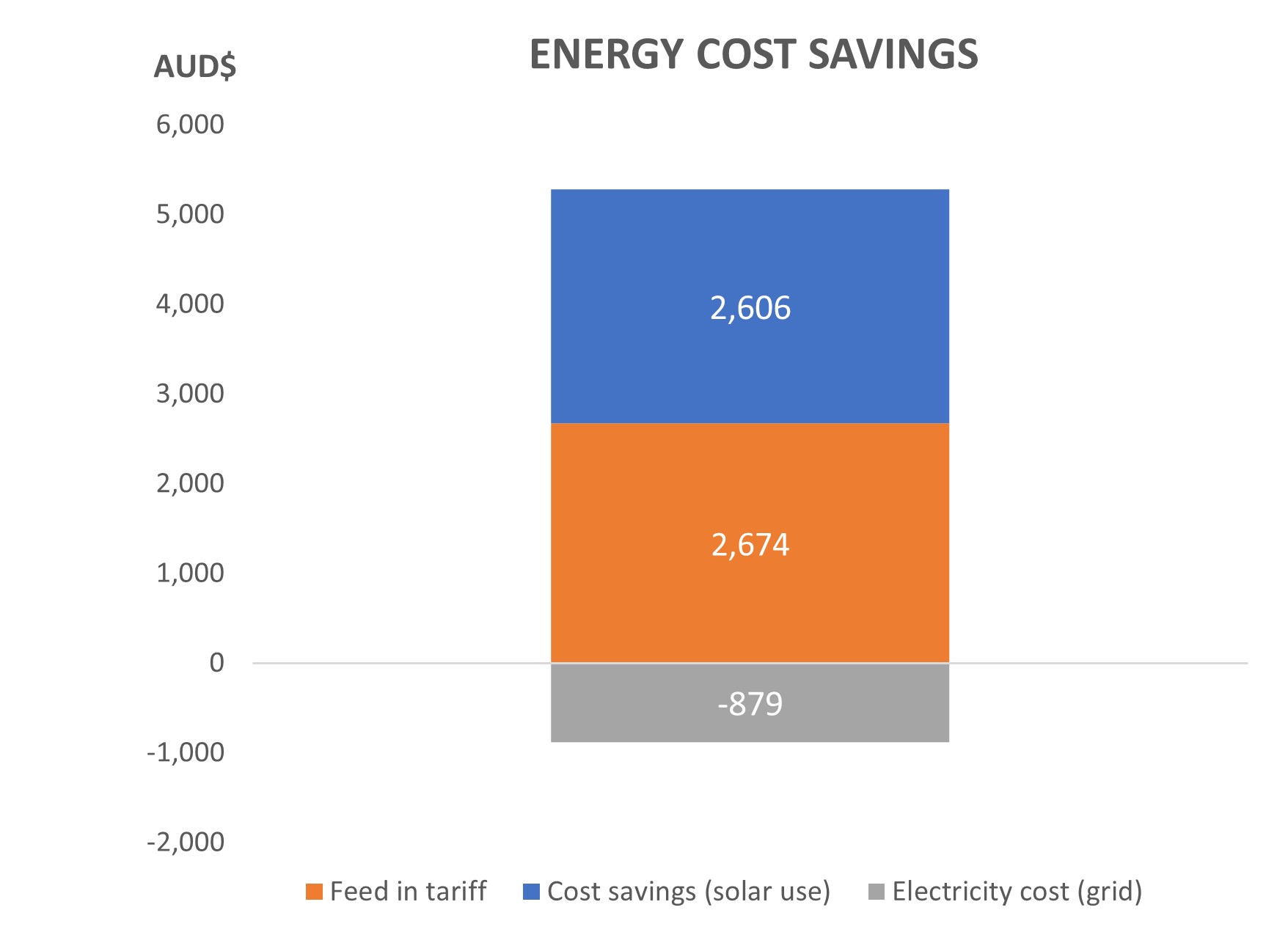A recent energy audit showed how improving the current systems can lead to energy and cost savings. The audit initially recommended a 13KW Solar PV system to offset the power costs from the grid, and a more effective heating system for the propagation area, although it will use slightly more power.
Table 1. Costs and savings from audit recommendations.
| Solution Proposed |
13kW Roof Mounted Solar PV System |
Heating: replace heat lamps with heat mats |
| Energy Savings (kWh) |
18,627 |
-32 |
| Cost Savings ($) |
4,757 |
-72 |
| Emission Savings (tCO2-e) |
15.1 |
– |
| Cost to implement ($) |
20,000 |
957 |
| Payback (years) |
4 |
– |
After talks with the auditor and the solar installer, the nursery opted for a 19.84kW solar system to maximise the available roof space. Taking advantage of Small Scale Technology Certificates (STCs), the total cost of the system was $14,000. The system is already paying dividends, with the nursery manager stating that “our electricity bills have significantly reduced”.
Solar generation exceeds overall energy, so excess energy is being fed back into the grid, helping to reduce energy bills through feed-in tariffs offsetting supply charges. Furthermore, the increased generation will help offset future improvements and provide more capacity for the business to expand production.
From the solar generation, 42% or 11,215 kWh are being used onsite valued at $2,606, and 15,728 kWh are being exported to the grid with a revenue of $2,674. Considering that 3,781 kWh – 25% of the total energy use onsite – are being imported from the grid at a cost of $879, there are potential savings from shifting consumption into the solar generation period. The total power balance of the farm, including solar exports and the energy cost distribution, are shown in the following figures.


QFF has also installed two real-time energy monitors to assist the farm in monitoring their energy consumption and making day to day efficiencies. The monitors cover the main load, pumps, solar system and one sub-main circuit, which operates various power circuits and a set of fans. For this case, the monitor will capture the data required from the solar generation and enable specific reporting on the cost savings.
Additional changes onsite to both organisational behaviour and manufacturing processes were implemented by the nursery. Some were quick and easy to achieve, and others needing more planning, including:
- Installing 15 x 150-watt energy-efficient fans to reduce fungal disease often seen in plants as a result of high humidity.
- Match irrigation with peak solar PV output to take advantage of onsite energy generation.
- Activating energy-saving features of office equipment and installation of timers should be considered. Office energy use can be reduced by 10-20% when energy saving modes are activated.
Based on the Measurement and Verification (M&V) process on the implemented solutions, total energy savings of 180% have been achieved, including the power exported to the grid and considering the increase in energy consumption during 2020, reaching 15,000 kWh/year given the addition of ventilation fans and the expansion of the farm. Cost savings of 152% over 2020 electricity bills have been achieved, including the feed-in revenue from solar export. Net Carbon emission savings have been estimated at 17.7 tCO2-e per year.
Table 2. Actual energy and cost savings.
| Solution Implemented |
19.84kW Roof Mounted Solar PV |
Heating: replace heat lamps with heat mats |
Ventilation Fans |
| Energy Savings (kWh) |
26,943 |
-189 |
-5,062 |
| Cost Savings ($) |
5,280 |
-48 |
-1,471 |
| Emission Savings (tCO2-e) |
21.8 |
– |
-4.1 |
| Cost to implement ($) |
14,000 |
957 |
N/A |
| Payback (years) |
4 |
– |
– |
An energy audit is a good investment.
An energy audit is a great way for a business to cut costs and boost productivity. Find out about what’s involved in an energy audit HERE and subscribe to our bi-monthly energy e-news HERE.
If you have any energy efficiency related questions for the team, get in touch at energysavers@qff.org.au.
The Energy Savers Plus Extension Program is delivered by the Queensland Farmers Federation with support and funding from the Queensland Department of Energy and Public Works.




